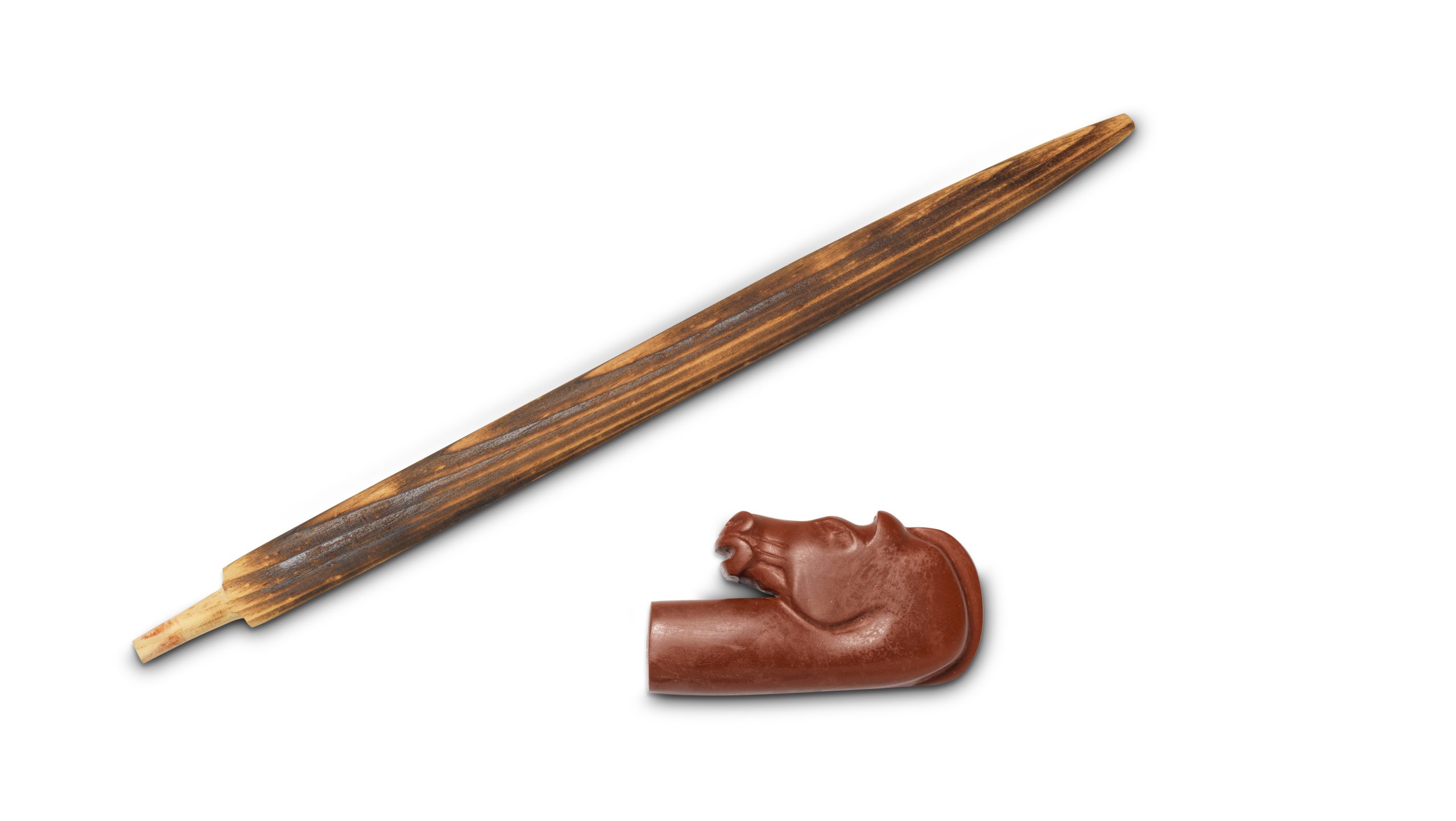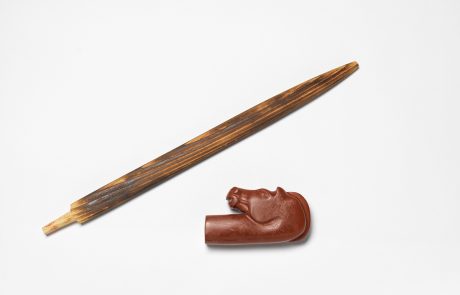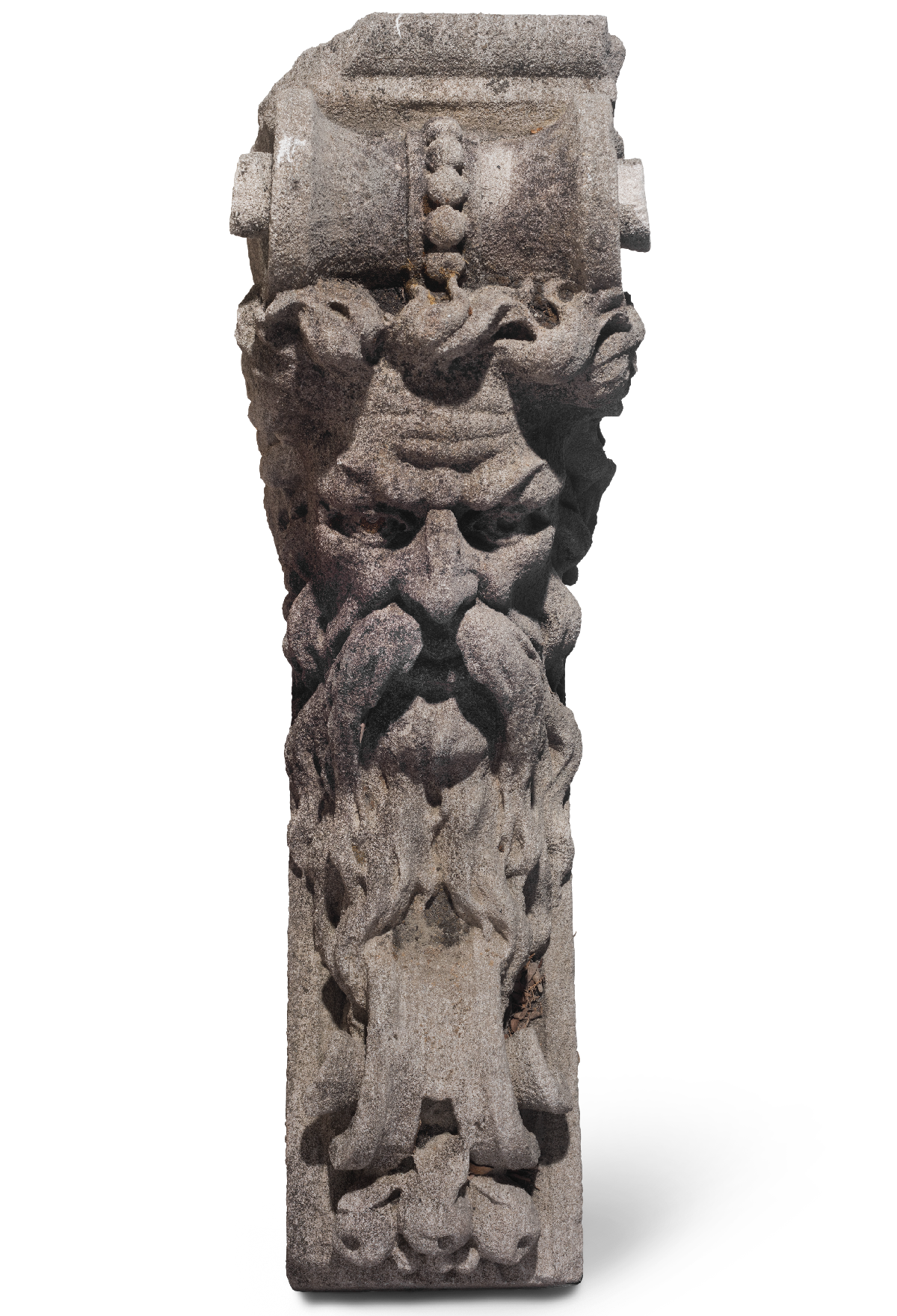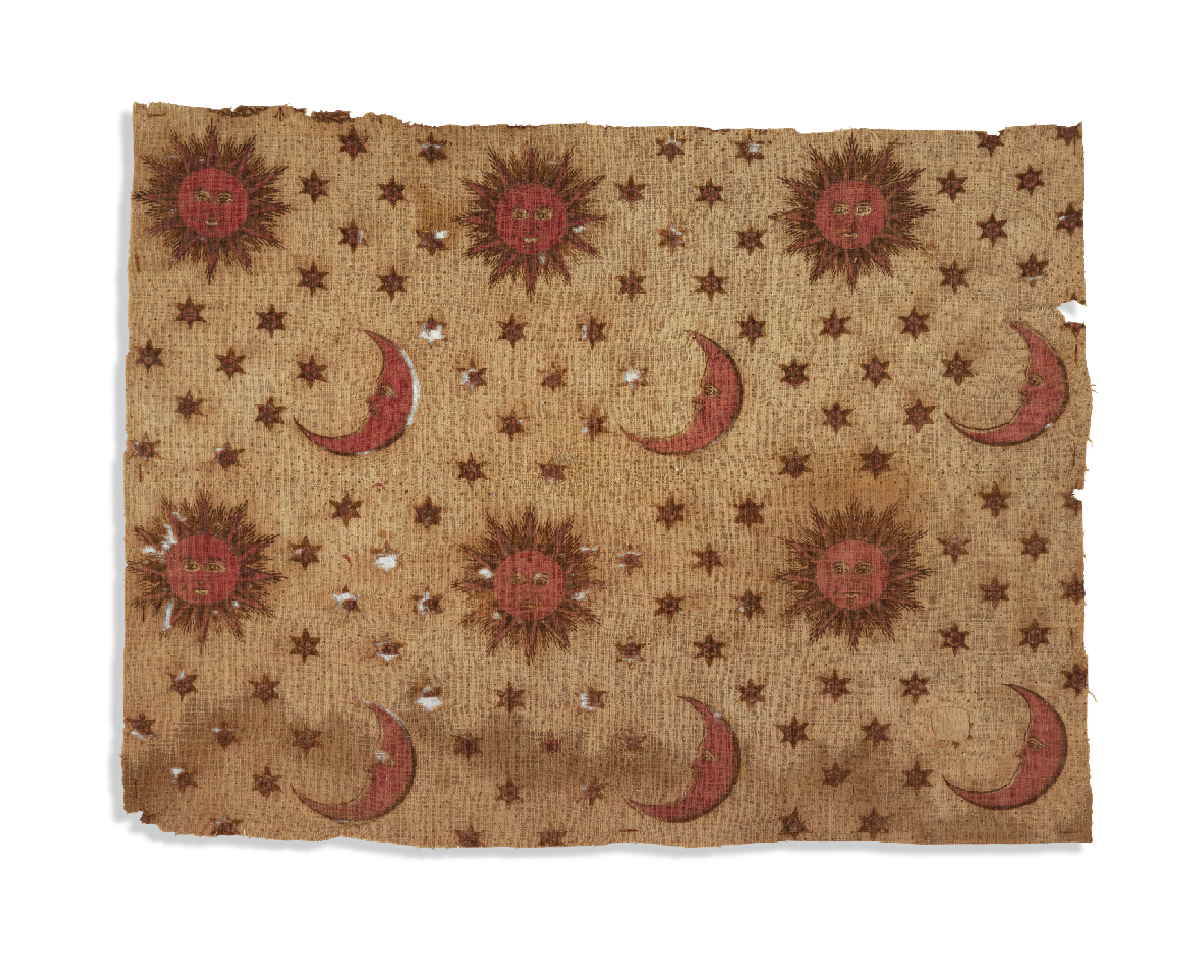Sioux Pipe
Pipe, ca. 20th century
Donald Eastman (“Many Lightnings”), Dakota Sioux
Red pipestone, pipe: 2 3/4 × 5 3/4 × 1 3/4 in. (7 × 14.6 × 4.5 cm); stem: 18 × 1 1/4 × 3/4 in. (45.7 × 3.2 × 1.9 cm)
Private collection
The carved bowl of this pipe draws on the tradition of wooden horse effigies and attests to the high esteem that Plains people have for horses. Several Native American cultures carve such ceremonial pipes from red argillite pipestone, an active material that has been mined on the Plains since around 200 BCE. Dakota creation stories attribute pipestone’s red hue to the blood of ancestors. Pipes carved from the material, and the smoke ingested through them, hold powerful spiritual and ancestral significance that lends the pipes ceremonial, medicinal, and diplomatic efficacy. This contemporary pipe has not been sanctified through use, but we follow Plains protocol in storing and displaying the pipe in its deactivated state, with the bowl separated from the stem.
See other items in How is Matter Active?










